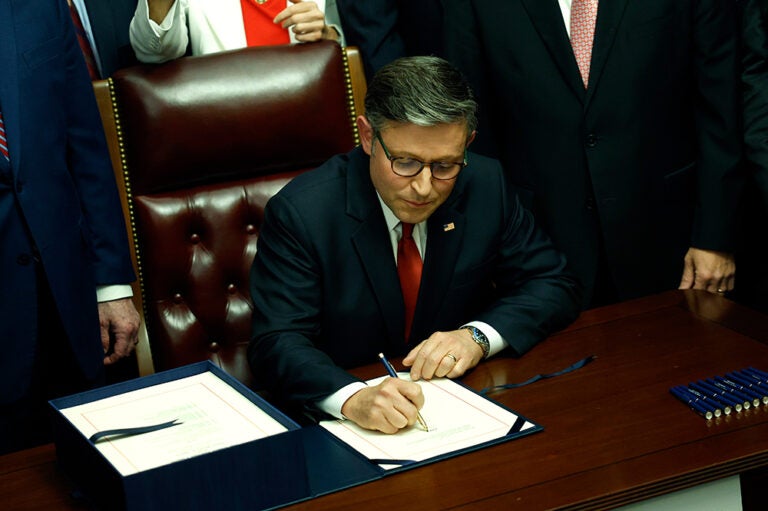Closing the tax gap would not only introduce more fairness into the system, but it could also be a big help for our nation’s fiscal imbalance — to the tune of hundreds of billions of dollars every year.
The tax gap is the difference between taxes owed and taxes paid on time, and the Internal Revenue Service (IRS) projected that it was $696 billion in 2022. Estimating the tax gap is a useful way to gauge the level of noncompliance with federal tax obligations and to inform the IRS’s formulation of tax administration strategies. While policy gridlock and a lack of leadership in Washington have made it difficult to make progress on our debt challenges, the magnitude of the tax gap suggests a path through improved tax administration for the federal government to collect additional revenues to narrow the budget deficit.
What Is The Tax Gap?
The tax gap is the difference between the total amount of taxes that are estimated to be owed and the amount actually collected on time. The IRS projected that the gross tax gap in 2022 was $696 billion, although the agency estimates that $90 billion of that amount will eventually be paid, resulting in a net tax gap of $606 billion. Individual income taxes made up the largest share of unpaid taxes, followed by employment and corporate income taxes.
According to the IRS, most unpaid taxes (77 percent) resulted from taxpayers underreporting their income or overstating credits, deductions, or other adjustments. The remainder of the gap stems from underpaying taxes or not filing a return.
What Factors Affect the Tax Gap?
The size of the tax gap is affected by factors including whether the IRS can verify reported incomes, the complexity of the tax code, and the agency’s operating budget.
Income Visibility
When the IRS can verify reported incomes through a third-party source, such as employers and financial institutions, taxpayers are less likely to underreport earnings. For example, employers report wages and salaries on W-2 forms, which makes it easier for taxpayers to maintain accurate records. For the largest source of the tax gap — the individual income tax — underreporting is less of an issue when income is also subject to withholding. Transactions that are less visible, such as business expenses for which the IRS does not receive independent information, enable taxpayers to more easily minimize their tax liability.
Complexity of the Tax Code
The tax code contains complex provisions designed to promote policy goals, including providing benefits to specific groups of taxpayers that sometimes lead to errors on tax returns. Among such provisions are more than 200 tax expenditures, which can take the form of exemptions, deductions, credits, and preferential rates. Consequently, about half of taxpayers seek paid tax preparers to assist them with compliance; however, tax preparers can introduce their own errors and are not regulated by the IRS. In 2023, tax expenditures totaled $1.8 trillion. To put that in perspective, that is more than the government spends on Social Security, defense, or Medicare.
The IRS Budget
The IRS’s operating budget affects the number of enforcement staff dedicated to reducing the tax gap through audits, collections, criminal investigations, and appeals. In 2023, the agency’s operating costs totaled $16.1 billion, a decline of $1.1 billion in real (inflation-adjusted) dollars from its peak in 2010. The decline in funding resulted in a loss of about 17,000 enforcement staff, although the IRS increased its taxpayer services staff by 5,000.
As the number of staff declined, so did the taxes collected through enforcement activities. In 2023, the total amount of additional tax required after audits was $32 billion, half the amount assessed in 2010 (adjusted for inflation).
Closing the Tax Gap
Multiple strategies are needed to reduce the tax gap, and adopting several options might be most effective. Some strategies include:
- Increasing IRS Funding: Additional IRS funding would allow the IRS to conduct more enforcement activities, potentially leading to an increase in additional tax required after audits. That would help to narrow the tax gap. Lawmakers have already started to pursue this strategy. In 2022, lawmakers enacted the Inflation Reduction Act, which provided an additional $80 billion in funding to the IRS over 10 years. Of that amount, $46 billion was dedicated to tax enforcement activities, including hiring additional auditors and investing in investigative technology. At the time, the Congressional Budget Office projected that the additional funds would increase revenues and reduce deficits on net by $101 billion over 10 years. However, lawmakers have since rescinded $22 billion of that funding; thereby also reducing revenues.
- Simplifying the tax code: Many economists believe that simplifying the tax code by eliminating deductions, exemptions, and preferential rates would lessen the burden of compliance and close the tax gap. In 2022, individual income tax underreporting related to adjustments, deductions, exemptions, and credits totaled $75 billion.
- Investing in IRS Modernization: Increased investment in technology modernization could help reduce the tax gap by making it easier for taxpayers to file returns and for the IRS to administer them. The IRS has frequently been criticized for failing to replace its outdated computer systems and heavy reliance on paper-based processes that cause significant delays in processing tax returns. Although the IRS has spent $5.3 billion from 2006 through 2022 to replace its outdated systems and increase automation, that amount represents only 3 percent of its total budget over the past 15 years.
Getting Our Fiscal House in Order
Reducing the tax gap could bring in additional revenues to the federal government, and it represents one approach to help address the structural mismatch between spending and revenues. Increasing appropriations to the IRS may lead to a smaller tax gap, and there are other approaches to properly enforce existing tax laws that could make a significant impact as part of an overall strategy to put our national debt on a more sustainable path.
Image credit: Photo by Getty Images
Further Reading
Budget Basics: What Is the Child Tax Credit?
The CTC provides assistance to families with children, and while it represents a relatively modest part of overall government spending, it is one of the largest tax expenditures.
Budget Basics: Tax Expenditures
Tax expenditures can come in the form of exclusions, exemptions, deductions, and credits.
How Did the One Big Beautiful Bill Act Change Tax Policy?
See how OBBBA restructured the tax landscape across four major areas: individual tax provisions, business tax provisions, energy tax credits, and health-related tax changes.


